
When visiting Japanese gardens or shrines and temples, have you ever noticed the beautiful stone crafts such as stone lanterns or guardian lion-dogs quietly standing in the scenery, all shaped by the hands of skilled artisans? These are not merely decorations but are crystallizations of Japan’s unique traditional culture, expressing harmony with nature and a spirit of prayer.
Across Japan, there are regions that have skillfully worked with stone over a long history, and among the traditional crafts designated by the Minister of Economy, Trade and Industry, several use stone as their main material.
This article will introduce a wide range of topics, including the history and characteristics of representative traditional stone crafts, famous production areas, sightseeing spots, and ways to enjoy them at home. We will explore the Japanese sense of beauty nurtured by stone culture and the profound skills of the artisans.
*If you purchase or reserve products introduced in this article, a portion of the sales may be returned to FUN! JAPAN.
What Are Japan’s “Stone Crafts”? Traditions Alive in Japanese Gardens and Shrines and Temples

Japanese crafts made from stone, such as stone lanterns, stone pagodas, and guardian lion-dogs, have long been deeply connected to our daily lives and beliefs. Because they are used outdoors for long periods, stone is required to be durable, water-resistant, and easy to work with.
Even today, among the traditional crafts designated by the Minister of Economy, Trade and Industry, there are items made using stone. For example, “Okazaki Stone Carving” from Aichi Prefecture and “Date Kan Stone Crafts” from Miyagi Prefecture are representative examples.
The History of Stone Crafts in Japan

The culture of stone processing in Japan began with stone tools in the Paleolithic era and developed into ornaments and ritual implements during the Jomon period.
In the Yayoi period, stone knives related to rice cultivation appeared, and in the Kofun period, stone coffins and stone grave goods were used, making stone an important material for both daily life and religious practices.
The full-scale development of “stone crafts” is said to have begun after the introduction of Buddhism during the Asuka period. With the construction of temples, the production of pedestal bases for Buddhist statues, stone pagodas, and stone lanterns flourished, and in the Heian period, as garden culture spread, decorative stonework also developed.
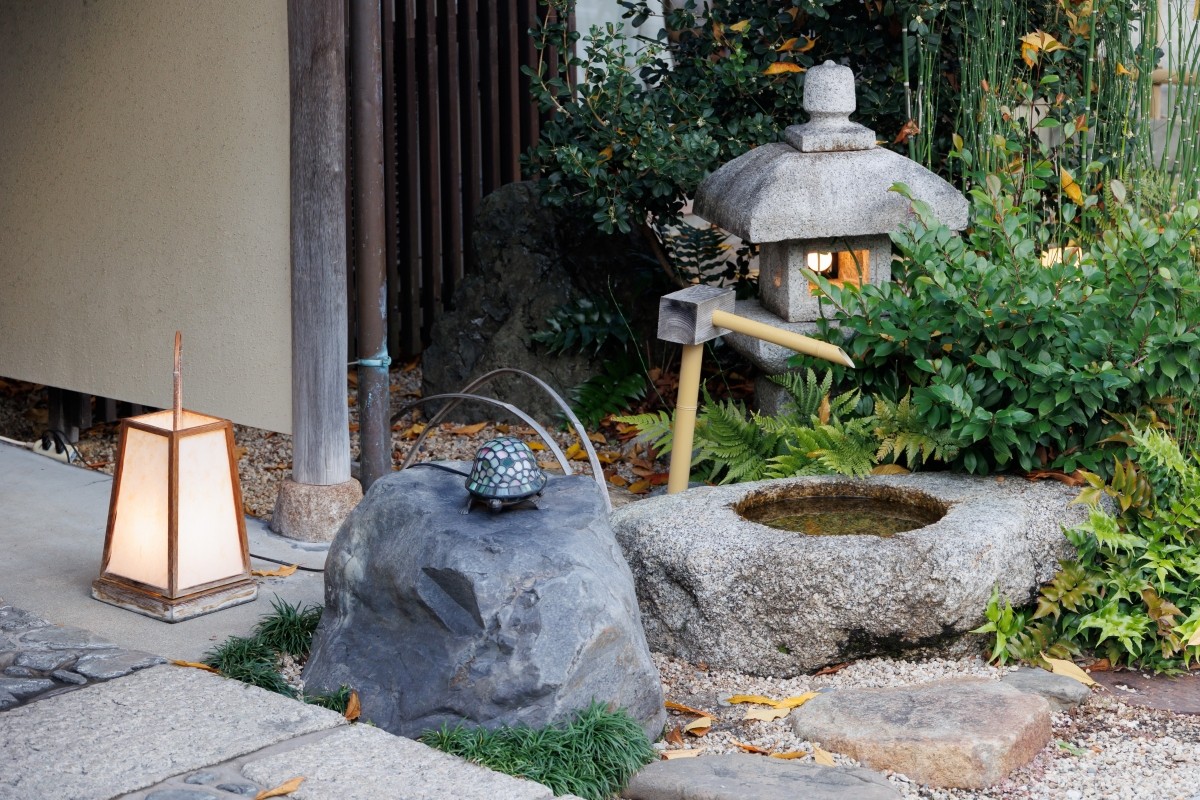
In the Edo period, the garden culture of samurai and townspeople matured, and stone lanterns and water basins became popular among the general public. After the Meiji period, with the spread of Western-style architecture, new forms of expression such as Western-style stone carvings and monuments were added. Stone crafts have continued to evolve with the times and are still handed down in various regions today.
Various Stone Works That Adorn Japanese Gardens and Shrines and Temples
Stone Lanterns
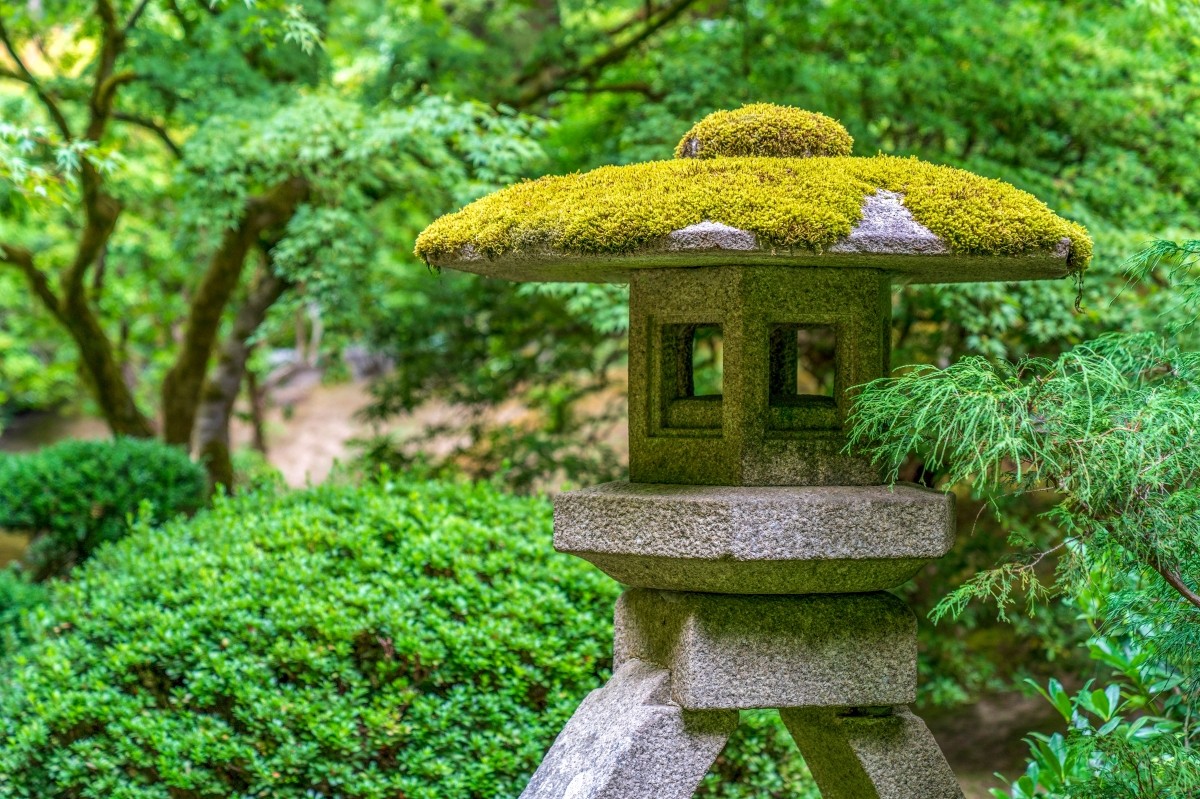
Stone lanterns were originally used as votive lights offered to the Buddha when Buddhism was introduced to Japan. They are composed of six parts: the jewel (Hoju/Kurin), roof, light chamber (Hibukuro), platform (Chudai), pillar (Sao), and base (Kadai), with a light placed in the central light chamber. After their introduction to Japan, they began to be placed not only at temples and shrines but also in the gardens of aristocrats, high-ranking samurai, and wealthy townspeople.
Even among the most representative types, there are varieties such as "Tachidoro" (standing lantern), "Yukimi-doro" (snow-viewing lantern), "Okidoro" (placed lantern), and "Ikkomi-doro" (buried lantern), with each type further divided into more detailed classifications. For example, one of the most well-known standing lanterns is the Kasuga type, which features a tall cylindrical post topped with a hexagonal roof and fire box. It was named after Kasuga Taisha in Nara, where many of these lanterns can be found.
Komainu (Guardian Lion-Dogs)
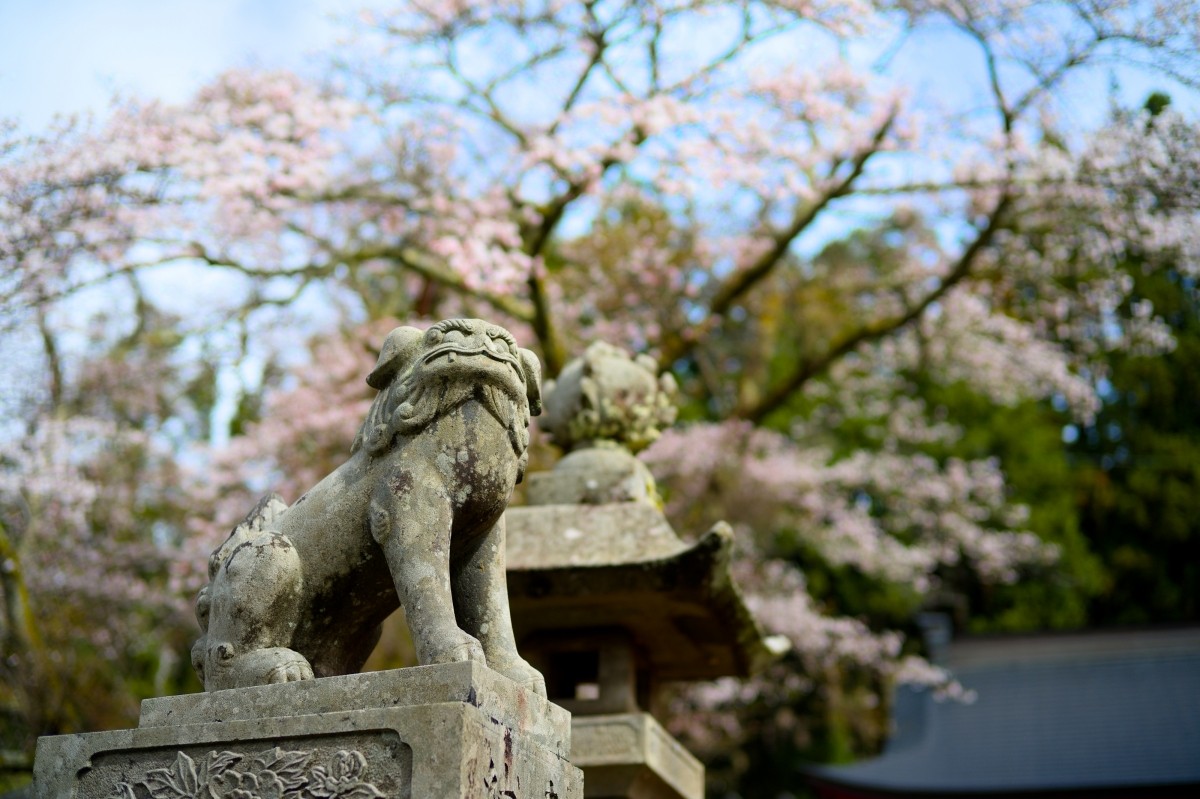
These are pairs of stone statues placed at the approach to shrines or in front of the main hall, and have long been cherished as "guardian beasts" protecting the shrine buildings. Their origin is said to be lion statues that came to Japan via ancient Persia, India, and China. In the Heian period, wooden versions were placed in the imperial court as talismans against evil. Later, they began to be made of stone, and from the Kamakura period onward, they spread to shrines throughout Japan.
The left and right komainu are distinguished as "A" (open-mouthed) and "Un" (closed-mouthed) forms. The open-mouthed "A" symbolizes beginnings, while the closed-mouthed "Un" represents endings. Most resemble lions, but traditionally, the one with horns is called "komainu," and the one without horns is called "shishi" (lion). Today, they are loved not only as symbols of protection against evil and misfortune at shrines, but also as decorative elements in gardens and at gates.
Sekito (Stone Pagodas)

These are memorial towers that came to Japan along with the introduction of Buddhism, built as symbols of prayers for the repose of the deceased. Their origin lies in the ancient Indian stupa (Buddhist reliquary), and in Japan, they began to be made of stone from the Nara period onward.
Representative forms include the "Gorinto" (five-ringed pagoda), which stacks a sphere and tower body on a square base, and the elegant "Hokyointo" (treasure pagoda), which features a finial at the top. From the Kamakura to Muromachi periods, their forms became more refined, and they were used not only in temples and graveyards but also as landscape elements in gardens. Today, they are also built as monuments and memorial towers, and are considered representative works of Japanese stone art.
Tobi Ishi (Stepping Stones)

These are stones arranged as pathways in Japanese gardens, allowing people to walk without stepping on the soil. They began to be used in tea gardens (roji) during the Azuchi-Momoyama period, and by the Edo period, they had been adopted in various garden styles. They offer the advantage of keeping footwear clean even on rainy days, and are also important elements that add movement to the garden landscape.
*Chatei: A garden with a tea house, also called "roji."
Ishibashi (Stone Bridges)
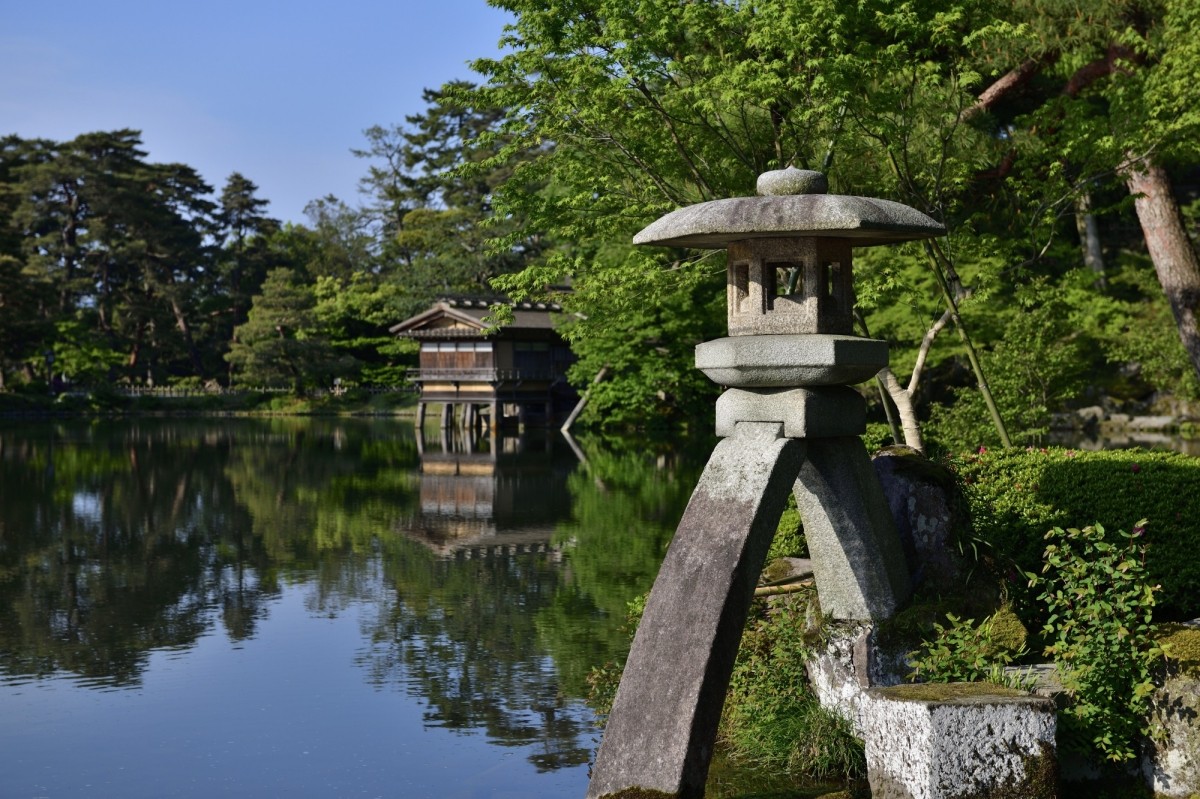
Stone bridges are often seen in stroll gardens with ponds, and their reflections on the calm water add charm to the scenery. There are various shapes, such as the gently arched "Soribashi" and the flat "Hirabashi" made by lining up cut stones.
During the Azuchi-Momoyama period, the aesthetic sense of tea master Sen no Rikyu led to the incorporation of simple and natural stone bridges in tea gardens, and in the Edo period, more decorative bridges also appeared. Even in modern gardens, like stepping stones, they are essential elements that combine practicality and scenic beauty, and are found in many gardens.
Tsukubai・Chozubachi (Stone Washbasin)

The stone washbasin, or chozubachi, is used to purify the hands and mouth before entering a tea room during the tea ceremony. Fresh, clean water is always flowing into the basin, where it quietly collects. The entire set of these facilities, including the washbasin, is called a tsukubai.
Originally, tsukubai were installed in gardens with tea rooms, but due to their tranquil appearance, they are now widely used as decorative elements in gardens and as features to enjoy the sound of water.
Stone Crafts Designated as Traditional Japanese Crafts
Stone crafts have been produced throughout Japan since ancient times, but as of 2025, only four regions nationwide have stone-based crafts designated as traditional crafts by the Minister of Economy, Trade and Industry.
Here, we introduce representative stone crafts that have been handed down in each of these regions.
Kyoto | Kyoto Stone Carving
Kyo Stone Carving (Kyo-Ishi-Kogehin), which originated in Kyoto, were designated as traditional crafts in 1979.Their history dates back to the Heian period, when the spread of Buddhism led to the flourishing construction of temples and gardens, providing the background for their development.
In the Shirakawa area, located at the foot of Mount Hiei in the northeast of Kyoto City, high-quality granite known as Shirakawa stone has been quarried and valued since ancient times as a material for stone pagodas and stone lanterns. Because Kyoto was long the political and cultural center of Japan, sophisticated stone crafting techniques developed here. Main products include stone lanterns, washbasins, stone pagodas, sculptures, and ornamental stones for gardens.
One characteristic of Kyo Stone Carving is that a single stonemason handles the entire process, from selecting the raw stone to cutting, carving, and finishing. Thanks to these careful steps, Kyo Stone Carvings are an essential element supporting Kyoto’s garden culture and are still highly valued today as crafts that symbolize the harmony between nature and people.
Tottori & Shimane Prefectures | Izumo Stone Lanterns
Izumo Stone Lanterns are stone crafts produced mainly in Sakaiminato City in Tottori Prefecture and Matsue and Izumo Cities in Shimane Prefecture. They were designated as a Shimane Prefecture Traditional Craft in 1982.
They have long been used for lighting in temples and gardens, but their current form developed during the Edo period. The feudal lord of Matsue highly valued the quality of Kimachi stone, a type of stone quarried in the Kimachi area of Shinjicho, Matsue City, and allowed only local craftsmen to process it under the domain’s protection.
At that time, the export of Kimachi stone to other domains was prohibited, so it was also called Otome stone, or “forbidden stone.”
Kimachi stone is fine-grained and soft, making it easy to work with, and it is also highly resistant to heat and cold, as well as weathering. Another attractive feature is that moss easily grows on its surface, allowing it to blend naturally into the landscape in a short time.
The elegant shape of Izumo Stone Lanterns not only enhances tea gardens and Japanese gardens, but today they are also appreciated as artistic stone sculptures and are popular overseas, including in Europe and North America, as garden ornaments and landscape materials.
Ibaraki | Makabe Stone Lanterns
Makabe Stone Lanterns are stone crafts produced mainly in Makabe Town, Sakuragawa City, Ibaraki Prefecture. The production of stone crafts flourished in this area because the Tsukuba Mountain region, centered on Makabe Town, yields high-quality granite known as Makabe stone and Inada stone. Their quality has been recognized, and in 2024, the International Union of Geological Sciences (IUGS) designated them as one of the world’s Heritage Stones (Natural Stone Heritage).
The origin of Makabe Stone Lanterns dates back to the late Muromachi period. Their most notable features are the delicate and beautiful carvings that make use of the white, hard stone, and their unique texture, which combines a sense of weight with softness. When moss grows on these stone lanterns, the gardens of Japanese temples and shrines that imitate nature become even more atmospheric and picturesque.
There are as many as 18 traditional techniques and methods involved in crafting these stone lanterns, and these skills, along with the use of traditional tools, have been passed down through generations of master craftsmen via an apprenticeship system. Thanks to these inherited techniques, Makabe stone lanterns continue to grace Japanese gardens and temples with their unchanged, elegant presence.
Aichi |Okazaki Stone Carving
Okazaki Stone Carving, made in Okazaki City, Aichi Prefecture, originated when stonemasons were invited from Kawachi and Izumi in 1590 to work on the development of the Okazaki Castle town. These stonemasons established the representative styles of Okazaki stonework, such as the Kasuga-style lantern and the hexagonal Yukimi-style lantern. One of the main features of the stone lanterns, a key product, is the simple beauty created by the intersection of straight and curved lines. In addition, the delicate and graceful carvings unique to these products add to their charm.
The raw stones used for Okazaki stonework products must be Okazaki granite, quarried in Okazaki, one of Japan’s leading stone-producing regions, or stones of equivalent quality. In addition, when manufacturing, the techniques and tools for mold making must also adhere to specific, predetermined instruments, such as the traditional tools: the "chisel" (for shaping the mold) and the "bishan" (for carving).
Okazaki Stone Carving, finished in this way, have played an important role in supporting the beauty of Japanese landscapes, being installed as lanterns in shrines and temples, as garden ornaments, and as night lights along pathways. Even today, garden lanterns and planters that adorn Japanese-style architecture and home gardens are actively produced.
Tourist Spots Where You Can Enjoy Stone Crafts
All across Japan, there are many shrines and gardens where you can experience stone crafts that have been handed down through a long history.
Kyoto | Ryoanji Temple
Ryoanji Temple in Kyoto is famous for its karesansui (dry landscape) garden, which is also registered as a UNESCO World Cultural Heritage site. Within the temple grounds, a precise replica of the masterpiece, the "Ware Tada Taru o Shiru" tsukubai (stone water basin), is installed near the tea house "Zorokuan." Visitors can appreciate the stone's sculptural beauty along with the spirit of Zen.
Shimane | Kamosu Shrine
Kamosu Shrine in Matsue City, Shimane Prefecture, is a historic shrine whose main hall, designated a National Treasure, is the oldest example of Taisha-zukuri architecture in Japan. In the surrounding Matsue and Izumo areas, you can see Izumo stone lanterns made from Kimachi stone in many places, giving you a close sense of the region’s stone culture.
Tokyo | State Guest House Akasaka Palace
Makabe stone from Ibaraki Prefecture was recognized in 2020 as the first Heritage Stone (Geological Heritage Stone Material) in East Asia. This Makabe stone is also used in the exterior walls of the State Guest House Akasaka Palace in Tokyo, where its excellent texture and luster support the beauty of the architecture. If you want to experience the appeal of the stone itself, you may also want to visit the quarries and stone exhibition facilities in the Makabe area.
Stone Crafts You Can Enjoy at Home as a Souvenir
Even without a large garden, you can enjoy the tranquil atmosphere of a Japanese garden at home. Even if it is difficult to create a pond or a mound, simply laying out small stones or displaying a compact Yukimi lantern (three-legged stone lantern) can add a touch of Japanese style to your balcony or entranceway.
By combining palm-sized stone ornaments or gyokuseki (polished stones), you can also recreate a miniature karesansui (dry landscape) in a corner of your room. Just arranging stones on white sand or gravel and drawing ripples can create a calming space.
Recently, tabletop “Karesansui Sets” and “Miniature Stone Lantern” sets are available at interior shops and online stores. Why not create your own small stone garden, inspired by authentic Japanese gardens?
🌳What is the price range for “Karesansui” sets? Check on Yahoo! Shopping
✨How much are “Miniature Stone Lantern” sets? Check on Yahoo! Shopping

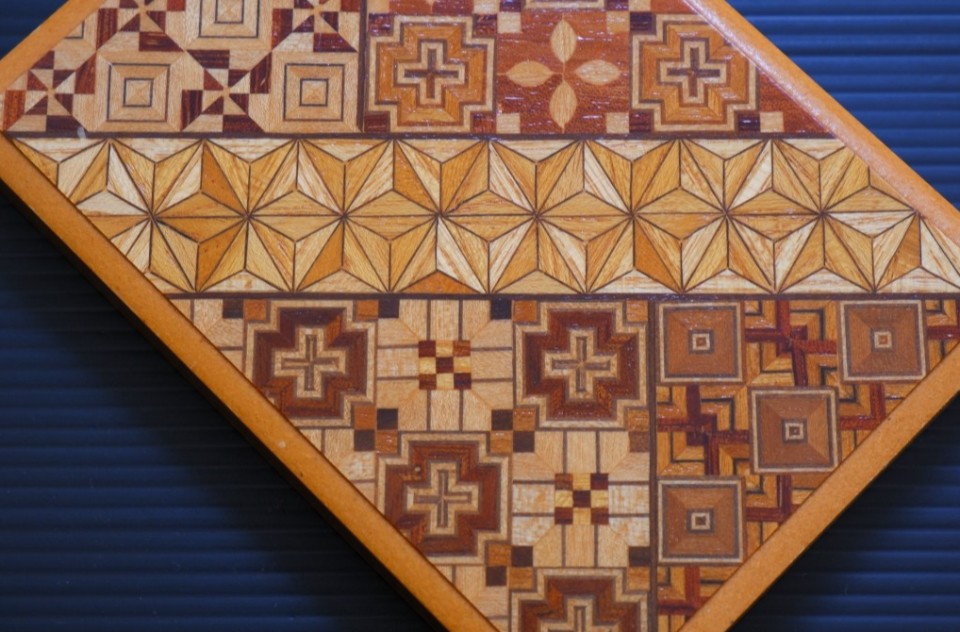


Comments